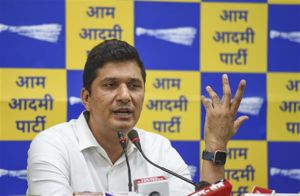
Vasu Jain
It was in the year 1986 that the first National Law University (NLU) was established in India under the guidance of Prof. Madhav Menon at Bengaluru. It was then that the legal education in India took a leap. The concept of the five-year integrated law course was also introduced at the same time. Since then, more than 20 NLUs have been established.
Law has become a lucrative career option. It is as appealing as any other professional course. Not restricted to the traditional courtroom litigations, a law professional can now make his career in arbitration, law firms, corporate sector, banks, NGOs and think tanks like NITI Aayog. With salary packages increasing by the day — at top law schools, the average package is of Rs 10-11 lakh and the average-highest package is Rs 18 lakh per annum — the stream has become popular like never before.
A long way to go
However, as surprising as it may sound, “the most brilliant and attractive peaceful profession,” as Justice Krishnaswamy Iyer, said, still struggles to attract the young aspirants. The 2018 Common Law Admission Test (CLAT) saw not even a total of 50,000 students taking it. While a record of 10,43,739 students had registered for the engineering entrance exam (i.e. JEE) and around 11 lakh had appeared for the medial entrance exam (i.e. NEET), the official figures for CLAT remain at merely 47,671.
Though the number of law aspirants has increased over the years — from 10,000 in 2008 to 48,000 in 2018 and recorded an increase of 15 per cent as compared to last year — it is still not something to boast about.
For this, one may blame the mismanagement of conduction of the CLAT exam. Almost each year, plenty of court cases are filed against the law entrance exam for mismanagement. The CLAT fiascos do have a negative impact. But had the exam been the sole reason, the medical entrance exam would also have seen a dip, instead of a 20 per cent increase after the 2017 wreck. Hence, more than anything else, the myths and misconceptions regarding the profession have made a large number of students opt for other courses.
Shatter the myths
More than litigation: Legal profession is not just about wearing a black coat and attending the courts. Although, most legal professionals in the past have opted for litigation and have become practicing advocates, but that was the only option available then. The recent spurt of law firms have led to multiple work opportunities. A law firm is a group of lawyers coming together to form a business entity to advise clients about their legal rights and responsibilities.
Don’t restrict the stream: Another myth is that legal education is about cramming section numbers, while these account for only a miniscule portion of legal studies. Legal education primarily focuses on intellectual independence by emphasising on critical thinking and development of essential communication skills.
Right for all: What’s holding back this sector from attracting students from science stream is the misconception that it is not an appropriate career choice for them. The top three ranks in CLAT 2018 and CLAT 2017 were secured by students of science or commerce streams. Courses like BSc LLB and BTech LLB are being offered by many reputed universities like Gujarat National Law University and UPES, Dehradun. Thus, it is not right to associate a stream-neutral course like law with only one stream.
Value honesty: Most people believe that the job of a lawyer is to fabricate lies. The belief that ‘lawyers are liars’ is essentially a delusion created by one-sided portrayal of them. Mahatma Gandhi in his weekly journal, Harijan, had mentioned, “A true lawyer is one who places truth and service in the first place and the emoluments of the profession in the next place only.”
A profession for all times
Throughout the history, there has been no dearth of examples and anecdotes where lawyers have played an influential and instrumental part in society. Be it the Independence movement or drafting of the Constitution, lawyers have played a dominant role in the past. While the single-largest occupation of the members in the first Lok Sabha was that of lawyers (36 per cent), more than half of the Presidents of India had been from the legal profession. Thus, intellectual stimulation, prestige, financial reward, and the ability to make a positive change in society are the logical reasons to pursue law.



























